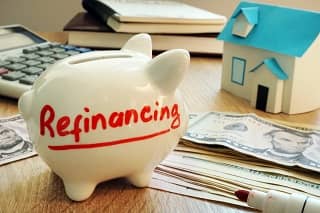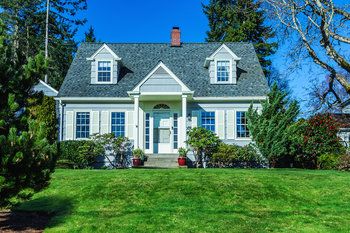If you thought the costs of getting your original mortgage were high, wait until you see the charges for refinancing -- they will probably be higher. You may have caught a break when you bought your home, because in many parts of the country it's customary for the home seller to split the title charges and to cover other costs. But when you refinance your mortgage, you have to pay all the fees yourself. If you don't have a lot of cash upfront to cover all or most of your refi costs, a "no-cost" refinance can ease your pain.
What Is a No-Cost Refi?
According to the Federal Reserve, "no-cost" means different things to different lenders, so it's important that you read your Good Faith Estimate to see exactly which costs your mortgage lender is covering. A "no-cost" refinance can take one of several forms:
- The mortgage lender eliminates their origination and administrative charges, but not the third-party fees or prepaid expenses.
- The lender covers all of their fees plus third-party charges (like appraisal and title expenses), but not prepaid items like taxes and insurance.
- The mortgage lender pays for everything, including loan costs and prepaid expenses.
- The lender might not pay any costs but instead adds them to your loan balance. This may also be referred to as capitalizing your costs or a "no-cash" refinance.
- The lender may offer to build your costs into the loan's interest rate.
Obviously, any costs that the lender covers aren't pulled out of thin air -- they ultimately come from your pocket. Similar to the last item in the above list, mortgage brokers are able to cover your loan costs by offering you a mortgage with an interest rate that's higher than prevailing market rates. They sell your loan to a wholesale lender with a higher-than-market rate, and the broker earns a commission based upon that difference. Part of this "yield spread premium" (YSP) is rebated to the broker as compensation.
YSP Does Not Mean "You're Swindling People"
YSPs have gotten a bad rap in the press, usually from individuals who don't understand them. The fear is that if brokers are getting rebates, then they aren't offering you the lowest mortgage rates available. Of course, in the case of a "no cost" refi, brokers are using that rebate to pay your loan costs. It doesn't really matter if brokers get YSPs or not -- by shopping around and selecting the best "no-cost" refinance rates, you can be sure that you are not being taken advantage of.
Mortgage Bankers Offer "No-Cost" Deals Too
Mortgage bankers don't get YSPs. They simply get premium-yielding loans as compensation. They are able to pay your loan costs by adding a rate premium to your loan's quote. Let's look at two examples, both with a $200,000 loan amount and closing costs which amount to $4,500 (2.25% of the loan amount):
The lender offers to cover closing costs ($4,500) and you get a 5.625% interest rate, or;
You pay the closing costs out of pocket and get an interest rate of 5.125%
The "no-cost" option carries with a monthly payment of $1,151, but costs you nothing out of pocket, while the regular loan carries a monthly payment of $1,089, a difference of $62 a month. With a "savings" of $62 per month, it will take over six years for the monthly savings of the lower rate to offset your $4,500 upfront outlay, and that's assuming that you don't earn any interest on that $4,500.
The "No-Cash" Alternative
The "no-cash" option is different. You don't pay for a premium interest rate, but your closing costs are added to your loan balance. In such a case, you are actually borrowing more money, so you have to have sufficient home equity to qualify for this method of refinance. Although you'll get the rock-bottom interest rate, it will be applied against a larger loan balance. Using the above example, if you roll $4,500 of loan charges into your mortgage balance, you pay interest on $204,500, instead of $200,000.
While you still wouldn't have to put up any cash, your payment is $24 a month higher at 5.125% than if you had paid the fees right upfront. Yet, you might prefer this option if you have a better use for that $4,500 today. For example, if you invest that amount and could receive a 10% return, or pay off a credit card with a 10% rate, you create income or savings of $37.50 a month.
Your method of paying refinancing costs is determined by your asset position at the time, the structure of the "no-cost" offers you get from lenders, and how long you intend to hold the property. Keep in mind that lower refinance rates cost more, higher rates cost less, and there are no give-aways, but simply trade-offs.
Gina Pogol has been writing about mortgage and finance since 1994. In addition to a decade in mortgage lending, she has worked as a business credit systems consultant for Experian and as an accountant for Deloitte.
Related links :



